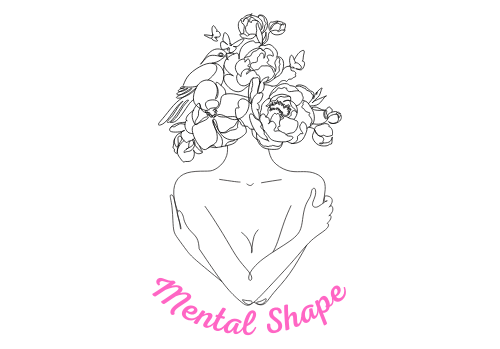Are you looking for new ways to manage your emotions and find inner peace? Look no further than yoga. In this article, we will explore how yoga can serve as a powerful tool for emotional healing. Through its combination of physical postures, breathing techniques, and meditation, yoga provides a holistic approach to tending to your emotional well-being. Whether you’re dealing with stress, anxiety, or simply seeking a sense of balance, practicing yoga can offer you the strength and serenity you need to navigate life’s challenges with ease.

The Benefits of Yoga for Emotional Healing
Yoga not only benefits our physical health but also has numerous advantages for our emotional well-being. Through a combination of physical movement, breathwork, and mindfulness practices, yoga can promote emotional healing and help us navigate through challenging emotions. By understanding the connection between our mind and body, we can tap into the potential of yoga to enhance our emotional intelligence, promote relaxation, and release stored emotions.
Physical Benefits
Engaging in a regular yoga practice offers a multitude of physical benefits that contribute to emotional healing. Yoga increases our flexibility, strength, and overall fitness level, which can boost our self-confidence and body image. Through the practice of various yoga poses, or asanas, we also stimulate the release of endorphins, the “feel-good” hormones that elevate our mood and reduce physical discomfort. By caring for our physical body, we lay the foundation for emotional well-being.
Psychological Benefits
Yoga has a profound impact on our psychological well-being. The practice of yoga encourages mindfulness, which involves paying attention to the present moment without judgment. This heightened state of awareness allows us to observe our thoughts and emotions without becoming overly identified with them. Through this process, we can develop emotional resilience, reduce anxiety and depression symptoms, and enhance our overall mental well-being.
Emotional Benefits
The emotional benefits of yoga go hand in hand with the psychological and physical aspects. By cultivating mindfulness and connecting with our breath, we can bring our attention to the present moment and develop a greater sense of self-awareness. This self-awareness enables us to recognize and acknowledge our emotions without getting overwhelmed by them. Yoga encourages us to explore and accept our emotions, allowing for emotional release and healing. Through regular practice, we may experience improved emotional regulation, increased emotional stability, and a greater sense of inner peace.
Understanding Emotions
Before delving into how yoga can promote emotional healing, it’s important to have a basic understanding of emotions and their impact on our overall well-being.
Emotional Intelligence
Emotional intelligence refers to our ability to recognize, understand, and manage our emotions effectively. It involves being aware of our own emotions and the emotions of others, and being able to navigate relationships and situations with empathy and compassion. Developing emotional intelligence through practices like yoga can have a profound impact on our emotional healing journey, as it allows us to recognize and address our emotions in a healthy and constructive manner.
The Mind-Body Connection
The mind-body connection is the complex relationship between our mental and physical states. Our thoughts, beliefs, and emotions can have a direct impact on our physical health, while our physical well-being can influence our emotions and mental state. Yoga recognizes and cultivates this mind-body connection through the integration of movement, breathwork, and mindfulness practices. By embracing this holistic approach, we can harness the power of yoga to promote emotional healing.
The Impact of Emotions on Health
Emotions can significantly impact our overall health and well-being. Unresolved emotional issues or chronic stress can manifest as physical symptoms such as headaches, digestive disorders, or sleep disturbances. Suppressing emotions or continuously experiencing negative emotions can also weaken our immune system and lead to increased susceptibility to illnesses. By addressing and healing our emotional wounds, we can enhance our overall health and vitality.
How Yoga Can Promote Emotional Healing
Now that we have a foundational understanding of emotions and their impact, let’s explore how yoga can specifically promote emotional healing.
Cultivating Mindfulness
Mindfulness is a central aspect of yoga practice that involves focusing our attention on the present moment. By cultivating mindfulness, we increase our self-awareness and create space to observe our emotions without judgment. This awareness allows us to gain clarity about our emotions, understand their underlying causes, and develop strategies to manage them effectively. Through regular yoga practice, we can cultivate mindfulness both on and off the mat, bringing greater awareness and emotional balance into our lives.
Releasing Stored Emotions
Yoga provides a safe and supportive environment for the release of stored emotions. Our bodies often hold onto emotional energy from past experiences, which can manifest as tension or stiffness. Through the practice of yoga poses, we can access these stored emotions and release them in a gentle and controlled manner. The physical movement, combined with focused breathwork, helps to unravel emotional blockages, allowing us to experience emotional release and healing.
Promoting Relaxation and Stress Reduction
Yoga is renowned for its ability to promote relaxation and reduce stress. The combination of physical movement, conscious breathing, and meditation practices activates the body’s relaxation response, counteracting the effects of the stress response. By engaging in a regular yoga practice, we can experience a profound sense of relaxation and calmness, which directly influences our emotional state. This deep relaxation enables us to let go of tension, reduce anxiety, and enhance our overall emotional well-being.
Techniques for Emotional Healing through Yoga
Now that we understand how yoga can promote emotional healing, let’s delve into some specific techniques that can be incorporated into our yoga practice.
Pranayama (Breathing Exercises)
Pranayama, or breathwork, plays a vital role in emotional healing through yoga. By consciously regulating our breath, we can directly influence our nervous system and emotional state. Practices like deep belly breathing, alternate nostril breathing, or breath retention techniques help calm the mind, reduce anxiety, and restore emotional balance. Regular incorporation of pranayama into our yoga practice can help us develop emotional resilience and enhance our overall well-being.
Asanas (Yoga Poses)
The practice of yoga poses, or asanas, offers a range of benefits for emotional healing. Certain poses are known for their ability to release tension, increase energy flow, and promote emotional release. Heart-opening poses, such as Bridge pose or Camel pose, can help open the chest and release stored emotions. Inversions, such as Headstand or Shoulderstand, can promote clarity and reduce anxiety. Standing poses, such as Warrior poses, can cultivate strength and stability, boosting our emotional resilience. By incorporating a variety of asanas into our practice, we can create a well-rounded experience that supports emotional healing.
Meditation and Mindfulness Practices
Meditation and mindfulness practices are integral components of yoga and can enhance our emotional healing journey. By sitting in stillness and redirecting our focus inward, we create space for self-reflection and observation of our emotions. Mindfulness meditation allows us to develop a non-judgmental awareness of our thoughts and emotions, helping us detach from them and promote emotional stability. Guided meditations specific to emotional healing can also be helpful in releasing and processing difficult emotions. Incorporating regular meditation and mindfulness practices into our yoga routine can significantly contribute to our emotional well-being.

Yoga Styles and Practices for Emotional Healing
Different styles of yoga offer unique approaches to emotional healing. Let’s explore some of the yoga styles and practices that can be particularly beneficial.
Hatha Yoga
Hatha yoga is a gentle and accessible style suitable for practitioners of all levels. It emphasizes physical postures, breathwork, and meditation. Hatha yoga promotes relaxation, stress reduction, and emotional well-being, making it an excellent choice for those seeking emotional healing through yoga.
Kundalini Yoga
Kundalini yoga combines physical movement, breathwork, and chanting to awaken and balance the energy within the body. This powerful practice helps release emotional blockages, enhance emotional resilience, and promote a deep sense of connection to oneself. Kundalini yoga provides a transformative experience for emotional healing.
Restorative Yoga
Restorative yoga focuses on relaxation and stillness, using props to support the body in various poses. This gentle practice is particularly beneficial for those dealing with emotional stress, trauma, or fatigue. Restorative yoga allows us to surrender and let go, facilitating emotional release and renewal.
Yoga Retreats and Workshops for Emotional Healing
Yoga retreats and workshops dedicated to emotional healing offer a supportive environment to explore and nurture our emotional well-being. These immersive experiences provide the opportunity to deepen our yoga practice, connect with like-minded individuals, and receive guidance from experienced teachers.
Finding the Right Retreat or Workshop
When searching for a yoga retreat or workshop for emotional healing, it’s essential to consider the specific focus and expertise of the facilitators. Look for retreats that incorporate practices specifically designed for emotional healing, such as mindfulness meditation, breathwork, and therapeutic yoga. Reading reviews and testimonials can also provide valuable insights into the retreat’s effectiveness and the facilitators’ qualifications.
Group Support and Connection
One of the benefits of attending a yoga retreat or workshop is the sense of connection and support that arises from being part of a group. Engaging in shared practices, group discussions, and supportive interactions can create a safe space for emotional exploration and healing. The companionship and understanding of fellow participants can be invaluable in our emotional healing journey.
Integration of Yoga and Therapy
Some yoga retreats and workshops integrate traditional therapeutic approaches with yoga practices. These programs offer a holistic approach to emotional healing, combining the benefits of yoga and psychological interventions. The combination of yoga and therapy can provide a comprehensive framework for addressing emotional wounds and promoting long-lasting healing.
Creating a Yoga Practice for Emotional Healing
To fully embrace the benefits of yoga for emotional healing, it can be helpful to create a dedicated yoga practice specifically tailored to your emotional needs.
Setting Intentions and Goals
Start by setting clear intentions and goals for your yoga practice. Reflect on the emotions you wish to heal, the areas of your life you want to focus on, and the changes you hope to see. Setting intentions and goals helps you stay motivated and gives direction to your practice.
Building a Regular Practice
Consistency is key when it comes to reaping the benefits of yoga for emotional healing. Aim to establish a regular practice that fits your schedule and commitments. Consistency allows for gradual progress and enables the transformative effects of yoga to unfold. Consider incorporating a variety of yoga techniques, such as breathwork, asanas, and meditation, to holistically address your emotional well-being.
Modifying Poses for Emotional Needs
Be gentle and compassionate with yourself as you navigate your emotional healing journey. Modify yoga poses to suit your physical and emotional needs. Listen to your body and honor any limitations or sensations that arise. If certain poses trigger intense emotions, make modifications or choose alternate poses that provide a sense of comfort and stability. It’s important to prioritize your emotional well-being as you practice yoga.
The Role of Yoga Teachers in Emotional Healing
Yoga teachers play a vital role in supporting emotional healing within their students. When seeking guidance from a yoga teacher, it’s important to find one who fosters a safe and supportive environment and possesses an understanding of emotional well-being.
Creating a Safe and Supportive Environment
Yoga teachers should create a safe and inclusive space for all students, where they can express themselves freely and without judgment. A supportive environment involves clear communication, empathetic listening, and an openness to students’ emotional experiences. Teachers should foster trust and confidentiality, allowing students to feel comfortable sharing their emotions.
Adapting Yoga for Individual Needs
Yoga teachers should have the knowledge and skills to adapt yoga practices to the individual needs of their students. They should be familiar with modifications and variations that support emotional healing and offer alternatives when necessary. Teachers should encourage students to listen to their bodies and prioritize self-care throughout their practice.
Providing Emotional Support
Yoga teachers can provide emotional support to their students by offering compassionate guidance and holding space for emotional exploration. They can offer resources, such as recommended readings or referrals to therapists or counselors, to complement the yoga practice. Teachers should strive to create a nurturing and empowering environment that facilitates emotional healing.
Case Studies: Yoga and Emotional Healing
Real-life case studies illustrate the transformative power of yoga for emotional healing. Let’s explore a few examples that demonstrate how yoga can positively impact emotional well-being.
Case Study 1: Overcoming Anxiety
Sarah, a 32-year-old woman, had been struggling with severe anxiety and panic attacks for years. She decided to explore yoga as a potential tool for managing her anxiety. Through regular practice, focusing on calming breathwork and grounding poses like Mountain pose and Child’s pose, Sarah learned to soothe her nervous system and regulate her emotions. Over time, she experienced a significant reduction in anxiety symptoms and developed coping strategies to navigate moments of stress.
Case Study 2: Healing from Trauma
Alex, a 45-year-old man, had experienced a traumatic event in his past that left him emotionally scarred. Seeking healing, he attended a trauma-sensitive yoga workshop. Through gentle and empowering yoga practices, along with mindfulness and meditation techniques catered to trauma survivors, Alex gradually built a sense of safety and trust within his body. With time, he experienced a release of stored emotions and a newfound ability to ground himself in the present moment, helping him on his journey to healing and recovery.
Case Study 3: Coping with Grief
Emily, a 28-year-old woman, was grieving the loss of a loved one. She found solace in a restorative yoga class specifically designed for individuals navigating grief. The gentle movements, supported poses, and guided meditations allowed her to process her emotions in a nurturing and compassionate environment. Through this dedicated practice, Emily gradually found moments of peace and acceptance, helping her navigate her grief journey with greater resilience and emotional well-being.
Incorporating Yoga into a Holistic Wellness Routine
Yoga can be a valuable component of a holistic wellness routine, complementing and enhancing other healing modalities.
Combining Yoga with Other Healing Modalities
Integrating yoga with other healing modalities, such as talk therapy, acupuncture, or massage therapy, can create a comprehensive approach to emotional healing. These modalities address different aspects of our well-being and provide additional support in our healing journey. Communicating with various healthcare professionals and exploring a well-rounded approach can maximize the benefits of yoga and promote emotional well-being.
Maintaining a Balanced Lifestyle
Incorporating yoga into a holistic wellness routine involves cultivating a balanced lifestyle that supports emotional healing. This includes practicing self-care, maintaining healthy relationships, nourishing the body with nutritious food, and prioritizing restful sleep. Yoga can serve as a catalyst for positive change, but maintaining overall well-being requires attention to all areas of our lives.
Self-Care Practices
Self-care practices are an integral part of emotional healing and are enhanced by incorporating yoga into our routine. Taking time for ourselves, engaging in activities that bring joy and relaxation, and nurturing our physical, mental, and emotional well-being are essential forms of self-care. Yoga can be a powerful tool for self-care, allowing us to reconnect with ourselves and tap into our inner resources for healing and rejuvenation.
In conclusion, yoga offers numerous benefits for emotional healing. By practicing yoga, we can enhance our emotional intelligence, promote relaxation, and release stored emotions. By incorporating different yoga techniques, such as breathwork, asanas, and meditation, we can cultivate emotional resilience and balance. Through the practice of various yoga styles, attending retreats, and developing a consistent yoga practice, we can embark on a transformative journey of emotional healing. Remember to seek guidance from experienced yoga teachers and consider integrating other healing modalities into your overall wellness routine. By prioritizing self-care and maintaining a holistic approach to well-being, you can harness the power of yoga to promote emotional healing and cultivate a greater sense of emotional well-being in your life.

